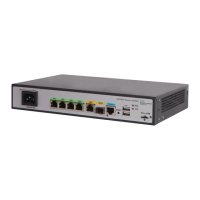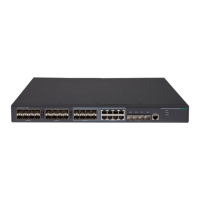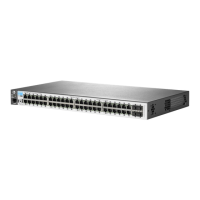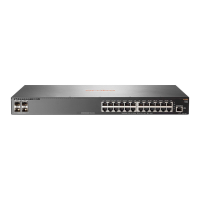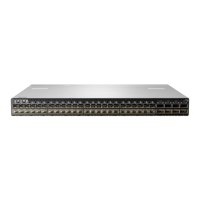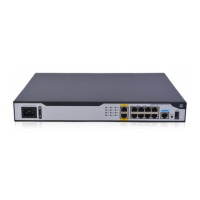282
After changing the settings in a policy that has been enabled, you must re-execute this command for
the changes to take effect.
Examples
# Enable the CLI-defined policy test.
<Sysname> system-view
[Sysname] rtm cli-policy test
[Sysname-rtm-test] commit
display rtm environment
Use display rtm environment to display user-defined EAA environment variables and their values.
Syntax
display rtm environment [ var-name ]
Views
Any view
Predefined user roles
network-admin
Parameters
var-name: Specifies a user-defined EAA environment variable by its name, a case-sensitive string of
1 to 63 characters. The name can contain digits, letters, and the underscore sign (_), but its leading
character cannot be the underscore sign. If you do not specify a variable, this command displays all
user-defined EAA environment variables.
Examples
# Display all user-defined EAA environment variables.
<Sysname> display rtm environment
Name Value
config_cmd interface m1/0/1
save_cmd save main force
show_run_cmd display current-configuration
Table 58 Command output
Name
Name of a user-defined EAA environment variable. This field displays a maximum of
30 characters. To display a user-defined EAA environment variable name of more
than 30 characters, use the
display current-configuration
command.
Value
Value of the user-defined EAA environment variable. This field displays a maximum of
30 characters. To display a user-defined EAA environment variable value of more
than 30 characters, use the
display current-configuration
command.
display rtm policy
Use display rtm policy to display monitor policies.
Syntax
display rtm policy { active | registered [ verbose ] } [ policy-name ]
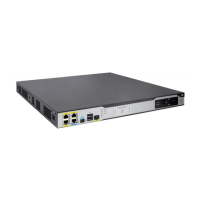
